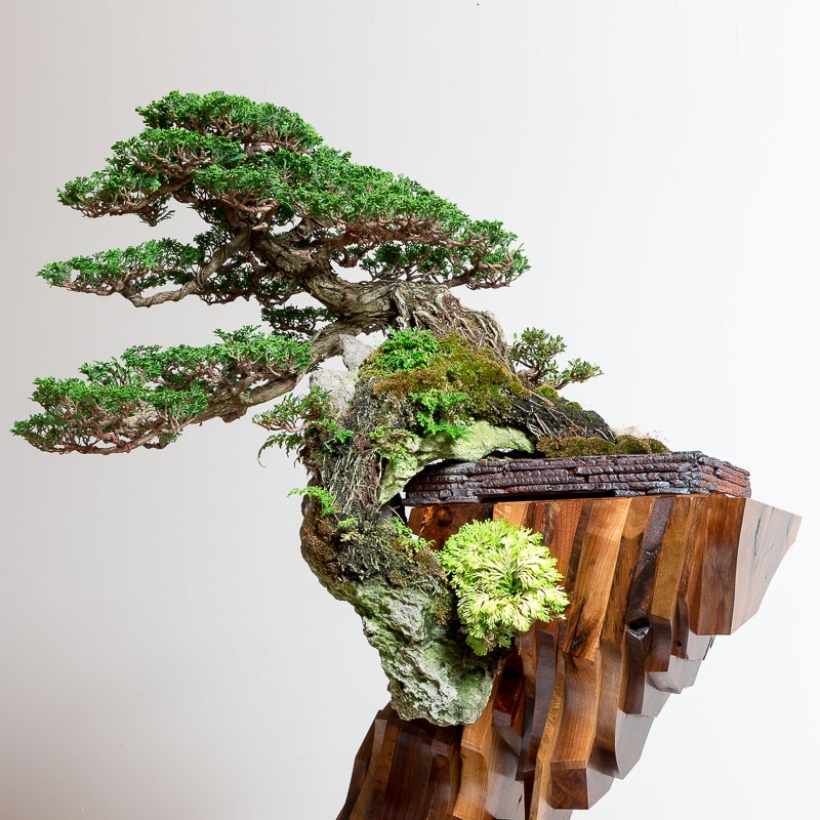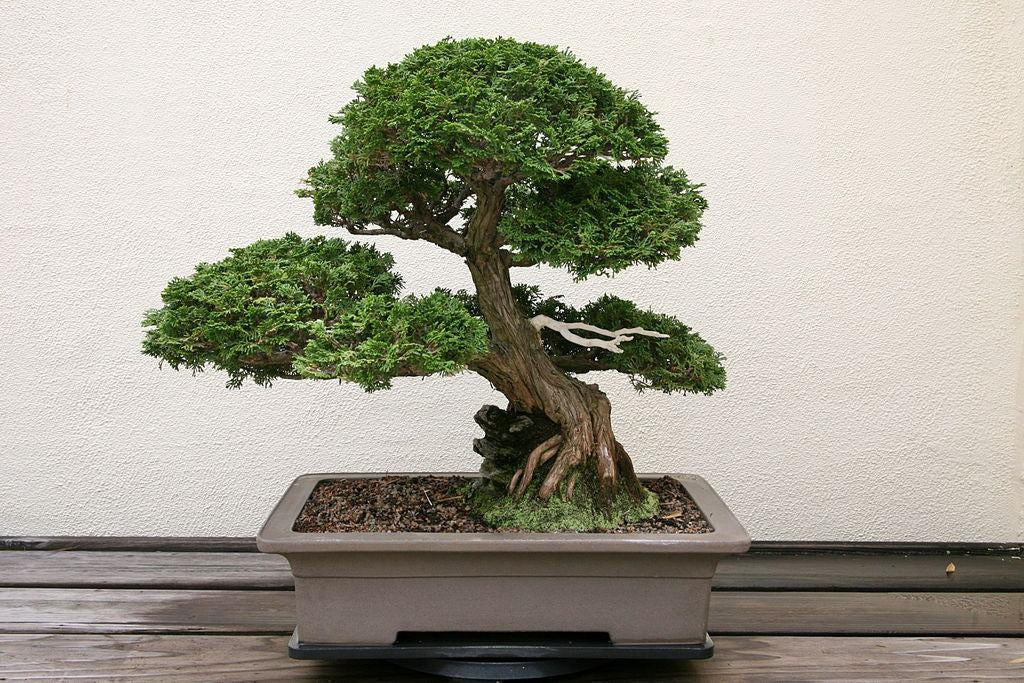Hinoki Cypress Bonsai trees require proper watering, sunlight, and pruning for optimal growth. Ensure well-draining soil and regular fertilization.
The Hinoki Cypress Bonsai, a miniature version of the majestic Hinoki Cypress tree, is cherished for its elegant appearance and manageable care. Known for its lush foliage and appealing shape, this bonsai tree adds a touch of nature to any space.
Proper care ensures it thrives and remains healthy. Regular watering, sufficient sunlight, and well-draining soil are essential. Pruning helps maintain its shape and promotes new growth. Fertilization provides necessary nutrients. With attention and care, the Hinoki Cypress Bonsai can be a beautiful and rewarding addition to your collection.

Credit: bonsaimirai.com
Introduction To Hinoki Cypress Bonsai
Caring for a Hinoki Cypress bonsai involves regular pruning and proper watering. Ensure it receives ample sunlight and well-draining soil.
Brief History
The Hinoki Cypress is a special tree from Japan. It has been used in gardens for centuries. People love it for its beauty and grace. Monks and gardeners started using it as a bonsai tree. This tradition has lasted for hundreds of years. The tree symbolizes peace and harmony.
Unique Characteristics
Hinoki Cypress has dark green leaves. They are soft and scale-like. The tree has a lovely fragrance. The bark is reddish-brown and peels in strips. It grows slowly, which is perfect for bonsai. The tree can live for many years.
Choosing The Right Hinoki Cypress
Choose saplings with healthy green leaves. Avoid any with brown or yellow tips. Look for strong stems and no signs of disease. Young trees adapt better to new environments. Older trees can be harder to shape. Healthy roots are a must. They should be white or light tan. Dark or mushy roots are a bad sign.
Chamaecyparis obtusa is a popular variety. It has a beautiful, compact shape. Nana Gracilis is another excellent choice. It grows slowly and stays small. Yatsubusa is great for beginners. It has a unique, dense growth pattern. Fernspray Gold offers a touch of yellow color. Each variety has its own charm.
Planting Basics
Caring for a Hinoki Cypress Bonsai involves regular watering and proper sunlight. Ensure soil remains slightly moist for optimal growth. Prune branches to maintain shape and health.
Soil Requirements
Hinoki Cypress bonsai trees need well-draining soil. A mix of akadama, pumice, and lava rock works well. Soil should retain some moisture but not be soggy. Well-draining soil prevents root rot and promotes healthy growth. Make sure the soil is loose and airy. This allows roots to breathe and grow.
Potting Techniques
Choose a shallow pot with drainage holes. This helps excess water escape. Use a mesh over the holes to keep soil in place. Gently remove the tree from its old pot. Trim the roots to fit the new pot. Place the tree in the center of the pot. Add soil around the roots and press gently. Water the tree thoroughly after potting. Ensure the tree is stable and upright.

Credit: crataegus.com
Watering Guidelines
Hinoki Cypress bonsai trees thrive with consistent moisture. Water deeply but avoid waterlogging. Let the soil dry slightly between waterings.
Frequency And Amount
Water your Hinoki Cypress Bonsai tree regularly. The soil should be moist but not soggy. During summer, water daily. In winter, water less often. Use a watering can with a fine spray. This helps the soil absorb water evenly. Check the soil by touching it. If it’s dry, water it.
Signs Of Overwatering
Yellow leaves are a sign of overwatering. Mushy roots also indicate too much water. The soil may smell bad. Reduce watering if you see these signs. Make sure the pot has good drainage. Overwatering can harm your tree. Be careful with your watering schedule.
Pruning And Shaping
Use sharp tools for clean cuts. Remove dead or unhealthy branches first. Make cuts just above leaf nodes. This encourages new growth. Thin out crowded branches. This allows light and air to reach inner leaves. Always cut at an angle.
Wiring helps shape branches. Use soft, flexible wire. Wrap wire around branches gently. Bend branches slowly and carefully. Remove wire after a few months. Over time, the tree will hold its new shape. Always check for wire marks.

Credit: www.lovemybonsai.com
Feeding And Fertilizing
Proper feeding and fertilizing ensure healthy growth for your Hinoki Cypress Bonsai Tree. Apply balanced fertilizer regularly during the growing season.
Nutrient Needs
Hinoki Cypress bonsai trees need specific nutrients. They need a balanced mix of nitrogen, phosphorus, and potassium. These nutrients help the tree grow strong and healthy. Always check the soil for nutrient levels. Too much fertilizer can harm the tree. Use organic fertilizers for best results. Organic options are safer and more effective. Regular feeding keeps the tree vibrant.
Best Fertilizers
Chemical fertilizers can be too strong for bonsai trees. Use organic options like fish emulsion or bone meal. These provide essential nutrients without harming the tree. Slow-release fertilizers are also a good choice. They give nutrients over time. Always follow the instructions on the fertilizer package. This ensures the tree gets the right amount of nutrients.
Pest And Disease Management
Aphids are small insects that suck plant sap. They can weaken the Hinoki Cypress. Spider mites are tiny and create webs on the tree. Scale insects attach to branches and leaves, forming small bumps. Caterpillars can chew the leaves and cause damage. Mealybugs produce a white, cotton-like substance and harm the tree.
Regular inspections help detect pests early. Clean your tools to avoid spreading pests. Use insecticidal soap to treat small infestations. Introduce beneficial insects like ladybugs to control aphids. Maintain good air circulation around the tree. Water properly to keep the tree healthy and strong.
Seasonal Care
Proper care for a Hinoki Cypress bonsai tree involves maintaining balanced moisture, providing sufficient sunlight, and regular pruning. Ensure the soil remains well-drained to prevent root rot.
Winter Protection
Hinoki Cypress bonsai trees need special care in winter. Protect them from strong winds and freezing temperatures. Place the bonsai in a sheltered location. Use a cold frame or greenhouse if available. Mulch the soil to retain moisture and insulate the roots. Water the bonsai sparingly, as overwatering can cause root rot.
Summer Maintenance
During summer, keep the Hinoki Cypress bonsai in a shaded area. Protect it from the harsh midday sun. Water the bonsai regularly to prevent the soil from drying out. Use a well-draining soil mix to avoid waterlogging. Prune the bonsai to maintain its shape and encourage new growth.
Repotting Strategies
Repot your Hinoki Cypress bonsai every 2-3 years. Early spring is the best time for repotting. The tree should be healthy before repotting. Check the roots for overcrowding. If roots circle around the pot, it’s time to repot. Do not repot if the tree is weak or sick. Always choose a slightly larger pot.
- Water the tree a day before repotting.
- Remove the tree gently from the pot.
- Trim the roots with clean scissors.
- Add fresh soil to the new pot.
- Place the tree in the new pot.
- Fill the pot with soil and press gently.
- Water the tree thoroughly after repotting.
Conclusion
Caring for a Hinoki Cypress bonsai tree can be rewarding. Ensure proper watering, pruning, and placement for optimal growth. Remember to monitor for pests and provide adequate nutrients. With patience and dedication, your Hinoki Cypress bonsai will thrive and bring beauty to your space.
Enjoy the journey of bonsai cultivation!

